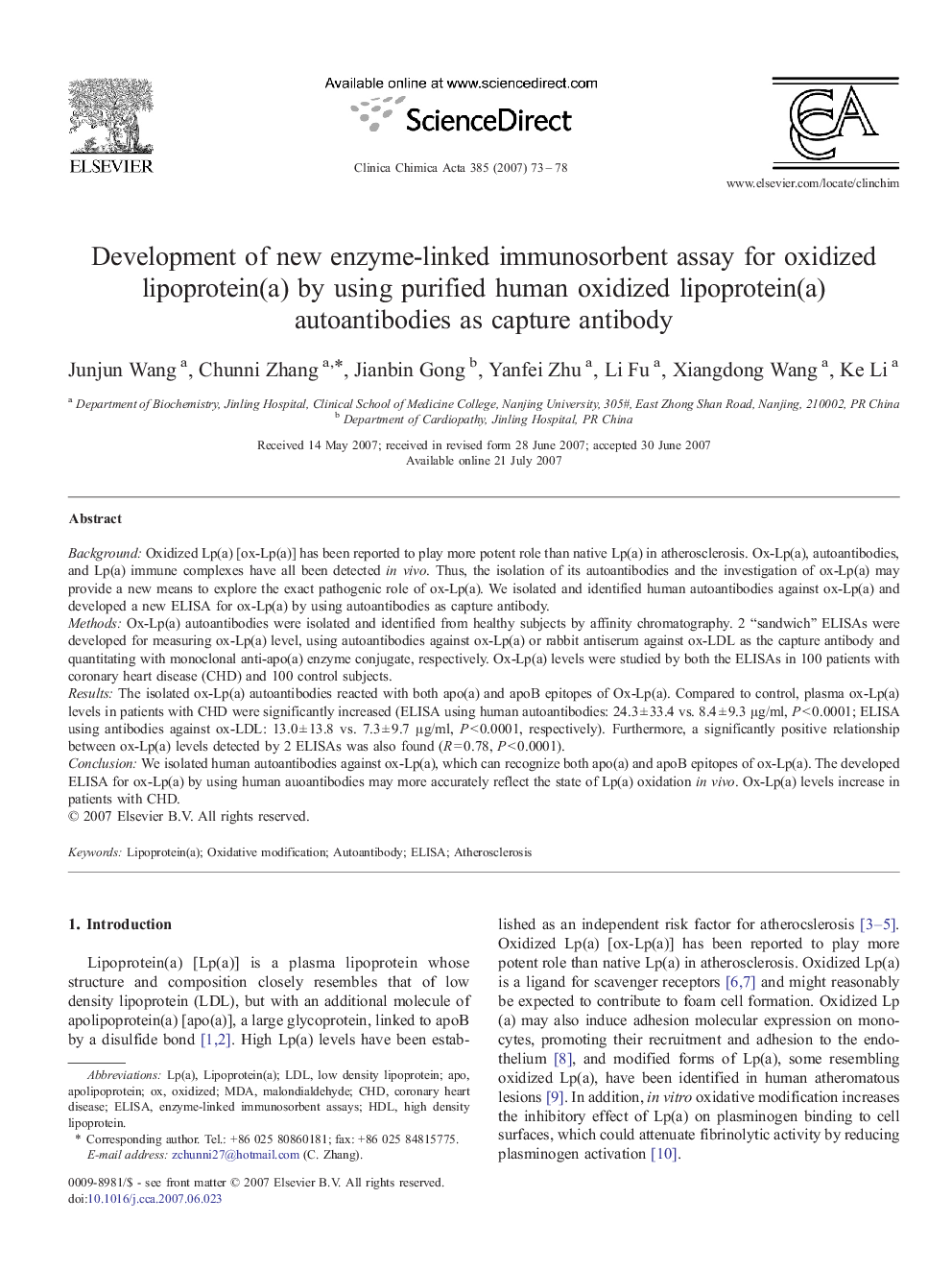| Article ID | Journal | Published Year | Pages | File Type |
|---|---|---|---|---|
| 1967509 | Clinica Chimica Acta | 2007 | 6 Pages |
BackgroundOxidized Lp(a) [ox-Lp(a)] has been reported to play more potent role than native Lp(a) in atherosclerosis. Ox-Lp(a), autoantibodies, and Lp(a) immune complexes have all been detected in vivo. Thus, the isolation of its autoantibodies and the investigation of ox-Lp(a) may provide a new means to explore the exact pathogenic role of ox-Lp(a). We isolated and identified human autoantibodies against ox-Lp(a) and developed a new ELISA for ox-Lp(a) by using autoantibodies as capture antibody.MethodsOx-Lp(a) autoantibodies were isolated and identified from healthy subjects by affinity chromatography. 2 “sandwich” ELISAs were developed for measuring ox-Lp(a) level, using autoantibodies against ox-Lp(a) or rabbit antiserum against ox-LDL as the capture antibody and quantitating with monoclonal anti-apo(a) enzyme conjugate, respectively. Ox-Lp(a) levels were studied by both the ELISAs in 100 patients with coronary heart disease (CHD) and 100 control subjects.ResultsThe isolated ox-Lp(a) autoantibodies reacted with both apo(a) and apoB epitopes of Ox-Lp(a). Compared to control, plasma ox-Lp(a) levels in patients with CHD were significantly increased (ELISA using human autoantibodies: 24.3 ± 33.4 vs. 8.4 ± 9.3 μg/ml, P < 0.0001; ELISA using antibodies against ox-LDL: 13.0 ± 13.8 vs. 7.3 ± 9.7 μg/ml, P < 0.0001, respectively). Furthermore, a significantly positive relationship between ox-Lp(a) levels detected by 2 ELISAs was also found (R = 0.78, P < 0.0001).ConclusionWe isolated human autoantibodies against ox-Lp(a), which can recognize both apo(a) and apoB epitopes of ox-Lp(a). The developed ELISA for ox-Lp(a) by using human auoantibodies may more accurately reflect the state of Lp(a) oxidation in vivo. Ox-Lp(a) levels increase in patients with CHD.
